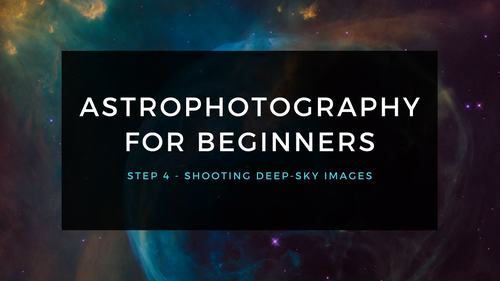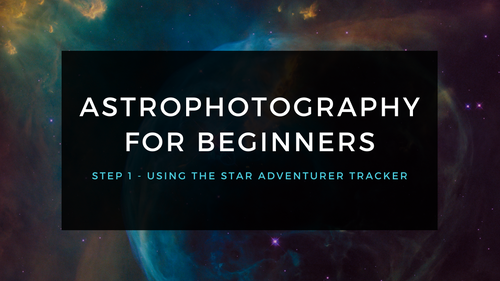

Produits de la même famille
Why Purchase from All-Star Telescope?
Free Expert Support
Whether you are a first timer needing help with setting up or an enthusiast that can't quite make that one thing work, our expert staff are ready to support your needs. With decades of knowledge and first hand experience we've been there and we can help you through it!
Stress Free, Secure Transactions
You can trust purchasing and delivery with All-Star Telescope. All of our transactions are 100% secure and Level 1 PCI DSS compliant thanks to Shopify's ShopPay platform. For additional protection, we insure 100% of the value of every shipment we make. If it get's lost during shipment, we replace it. If it gets damaged during shipment, we replace it. We make sure your product arrives exactly as you would expect it to; we promise.
We also ensure privacy protection. We never keep any of your credit card information on file and any of your personal data is stored according to our policies.
30 Day Return Policy
Buy with confidence knowing that we accept returns up to 30 days after purchase. We want you to have something you will actually use and we are confident that we keep good quality products in our store with No Junk.
Price Match Promise
Shipping around for the best price is tough, we make it easier by offering the best pricing in the market. But if you find a better price on an in-store item somewhere else we will match it!
Description du produit
Filtre Antlia ALP-T Dual Band 3,5 nm SII&Hb : Le filtre ALP-T Dual Band 3,5 nm SII&Hb est un filtre à double bande étroite, qui laisse passer les lignes rouge foncé Sulphur-II 672,4 nm et bleue Hydrogen-Beta 486,1 nm et est principalement conçu pour les caméras couleur afin d'aider les astrophotographes à prendre des images du ciel profond avec un rapport signal/bruit supérieur. Avec une demi-bande passante FWHM conçue à 3,5 nm et atteignant une densité optique (OD) de 4,5 sur les longueurs d'onde indésirables, il fonctionne efficacement pour bloquer la pollution lumineuse, le clair de lune et la lueur aérienne, ce qui conduit à un contraste amélioré dans les images de nébuleuses en transmettant efficacement uniquement le signal des lignes d'émission SII et H-bêta.
La combinaison de ces deux filtres double bande Ha&OIII et SII&H-beta permet d'obtenir des images à bande extrêmement étroite avec des caméras OSC en capturant les données spectrales de 4 canaux, c'est-à-dire Ha/OIII/SII/Hb. Le spectre de ces quatre canaux peut être séparé et recombiné en différentes palettes de couleurs lors de votre post-traitement. Les images résultantes peuvent être utilisées pour améliorer le contraste de luminance des images traditionnelles équilibrées en RVB ou pour créer des images dans différentes palettes de fausses couleurs populaires telles que HO-Hb, SHO, HS-OHb, HOO, etc.
Les revêtements multicouches avancés des filtres à double bande Antlia ALP-T isolent efficacement les lignes rouges, Ha, bleu-vert, OIII, rouge foncé SII et bleues H-bêta des nébuleuses en émission, avec une suppression presque totale de la densité optique (OD) 4,5 sur les longueurs d'onde indésirables de la pollution lumineuse, du clair de lune et de la lueur aérienne. Le résultat est que la version à double bande ALP-T Ha&OIII et la version SII&Hb créent un rapport signal/bruit supérieur et un meilleur contraste dans vos images OSC, qu'elles soient utilisées en zone urbaine ou rurale, ce qui en fait d'excellents choix pour les astrophotographes souhaitant capturer des images célestes de haute qualité et plus détaillées.
Caractéristiques principales
- La conception Ultra FWHM 3 nm/3,5 nm permet d'augmenter le temps d'exposition et de capturer un signal de nébuleuse détaillé
- Conçu pour être utilisé principalement avec des caméras couleur pour capturer des données plus propres ou utilisé comme caméras mono à filtre de luminance pour gagner du temps d'imagerie
- Recommandé pour être utilisé ensemble pour créer des images avec un meilleur rapport signal/bruit (SNR) et une meilleure isolation entre les 4 canaux
- La suppression de la densité optique (OD) 4,5 sur les longueurs d'onde indésirables ajoute un rapport signal/bruit
- Le proche infrarouge (NIR) est bloqué jusqu'à 1100 nm
- Décalages vers le bas du spectre réduisant la bande passante modérée et le sommet plat idéal
- Il est recommandé d'utiliser le filtre avec des optiques dont le rapport f est inférieur à f/4 pour de meilleures performances. Pour des optiques plus rapides que f/4, la version haute vitesse pré-décalée est un meilleur choix.
- Dépôt assisté par canon à ions d'une technologie de revêtement multicouche double face sur le substrat poli double face, ce qui en fait le filtre de suppression de la pollution lumineuse le plus cohérent et le plus précis
- Le revêtement antireflet à suppression de halo est utilisé pour minimiser le halo et les réflexions internes
- Conçu pour supprimer l'éclairage artificiel de l'échelle Bortle 1 à l'échelle Bortle 8
- Bords noircis des formats non montés pour minimiser les reflets internes
- La technologie de revêtement toujours fiable d'Antlia rend sa durabilité très fiable
- Bien que principalement conçu pour être utilisé avec des caméras couleur, le filtre est également très efficace avec les caméras monochromes pour gagner du temps d'imagerie
Caractéristiques
| Modèle | Hydrogène Alpha | Oxygène III | Soufre-II | Hydrogène bêta |
| FWHM | 3 nm +0,6/-0,1 nm | 3 nm +0,6/-0,1 nm | 3,5 nm +0,5/-0,5 nm | 3,5 nm +0,5/-0,5 nm |
| CWL (longueur d'onde centrale) | 656,3 nm | 500,7 nm | 672,4 nm | 486,1 nm |
| Transmission de pointe | 90% | 82% | 90% | 85% |
| Blocage | ≥OD4,5 à 300-1100 nm | ≥OD4,5 à 300-1100 nm | ≥OD4,5 à 300-1100 nm | ≥OD4,5 à 300-1100 nm |
| Épaisseur du filtre | 2 mm +/- 0,05 mm | 2 mm +/- 0,05 mm | 2 mm +/- 0,05 mm | 2 mm +/- 0,05 mm |

Articles, vidéos et liens supplémentaires

Astrophotographie pour les débutants Étape 4 : Prendre des images du ciel profond
Prendre des photos du ciel profond peut être intimidant, heureusement, il existe un processus simple à suivre pour vous permettre d'obtenir de superbes photos ! Voici le processus typique pour pren...

Astrophotographie pour les débutants Étape 3 : Choisir l'équipement pour l'imagerie du ciel profond
L'utilisation d'un capteur d'étoiles vous permet d'acquérir de l'expérience avec les principes fondamentaux de l'imagerie du ciel profond. Tirer sur la Lune vous permet d'acquérir de l'expérience ...

Astrophotographie pour les débutants - Commencer ici : Entrer dans l'astrophotographie étape par étape
Photographier le ciel nocturne n'a jamais été aussi populaire, ni aussi facile. Le choix d'équipement n'a jamais été aussi meilleur, ni plus abordable. Cependant, selon les conseils donnés par Dick...

Astrophotographie pour les débutants Étape 1 : Utilisation du Star Adventurer Tracker
Le moyen de loin le plus économique et le plus simple de capturer de belles images de la Voie lactée et de grands objets du ciel profond comme la galaxie d'Andromède (illustré ici) est d'utiliser u...

Astrophotographie pour les débutants Étape 2 : Comment photographier la Lune
Les gros plans de la Lune sont gratifiants et constituent un moyen facile d'apprendre à photographier à travers votre télescope. Bien que de bons résultats soient possibles avec un appareil photo d...

